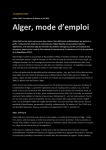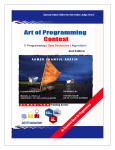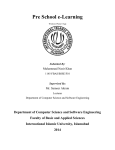Transcript
TROUBLESHOOTING THE NEXT-GENERATION WIRELESS NETWORK The proliferation of cell phones can make it easy to forget how they rely upon ever-more sophisticated networks. Carleton’s Halim Yanikomeroglu and colleagues are taking that sophistication into the future. Even as standardization of 4G (fourth generation) networks concludes around the globe, Yanikomeroglu, a professor in the Department of Systems and Computer Engineering, anticipates the challenges that await 5G iterations. “Interference is expected to become a nightmare in future wireless networks,” said Yanikomeroglu, pointing to an “ever-increasing demand for data traffic.” The native of Turkey and his research team are working on a solution they call “inter-cell interference co-ordination” to help regulate interference by co-ordinating radio channels across multiple cells. In April 2012, an international patent application was filed for the work of Akram Bin Sediq, a member of Yanikomeroglu’s team. “To the best of our knowledge, this is the strongest patent application in this area,” says Yanikomeroglu. “There is a viable possibility that the developed concept may be implemented in next-generation wireless networks.” In 2011, Yanikomeroglu and colleagues received five years of funding from the Ontario Ministry of Research and Innovation to facilitate an ongoing collaboration with Huawei-Canada and Telus in developing technologies for 5G wireless networks. For Yanikomeroglu, that’s a foundation for an even more ambitious future. “My dream is to establish a centre to take Carleton’s already established profile in wireless to the next level,” said Yanikomeroglu. 11








